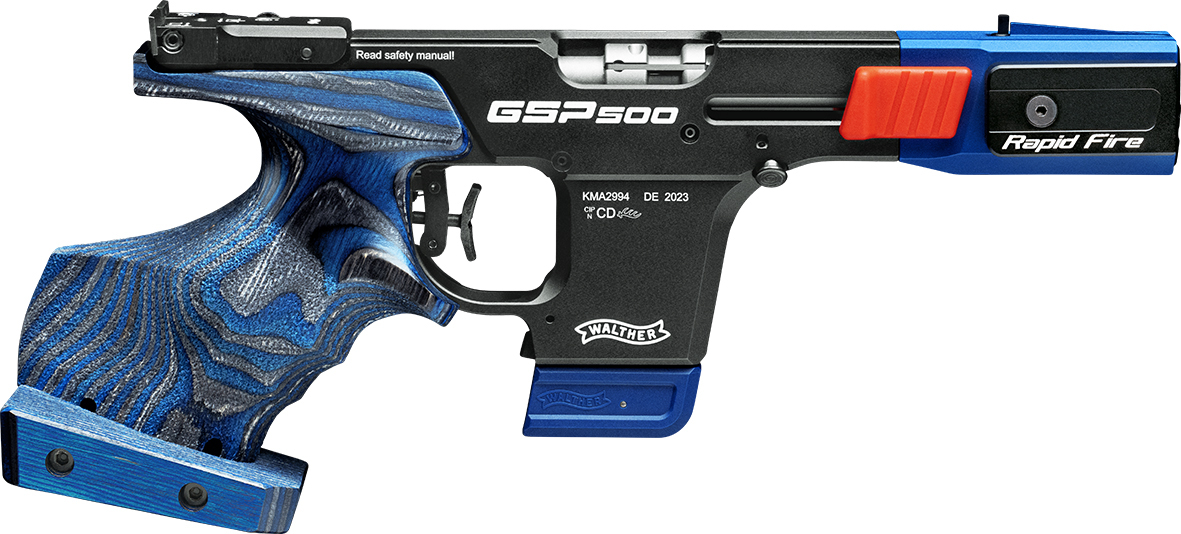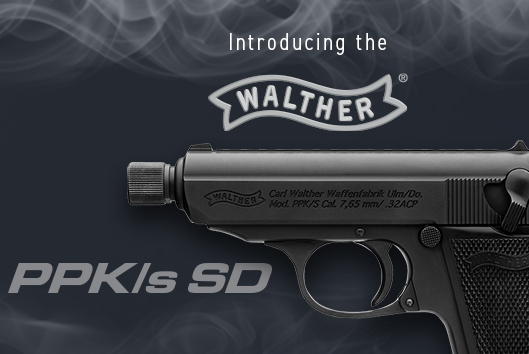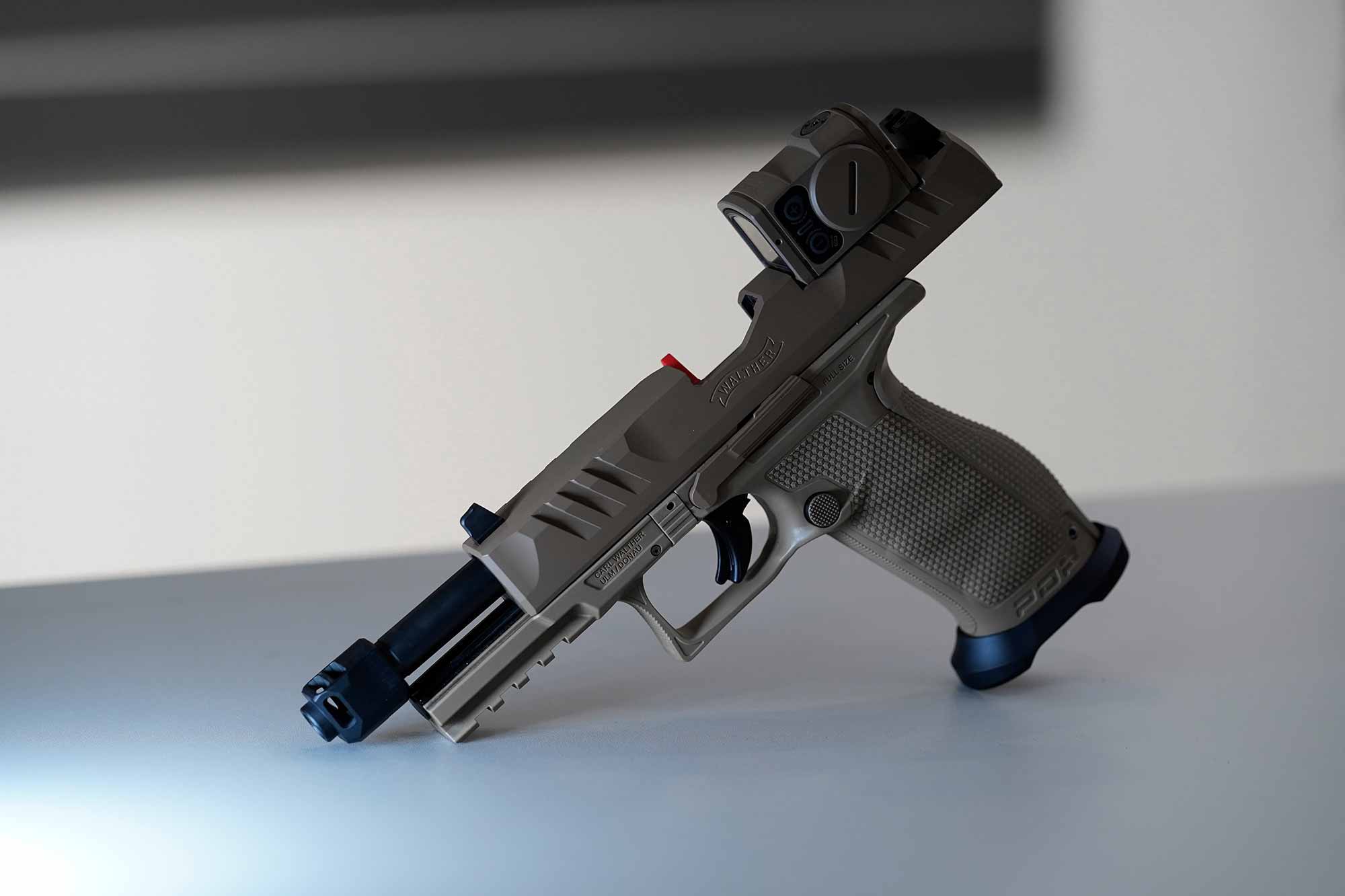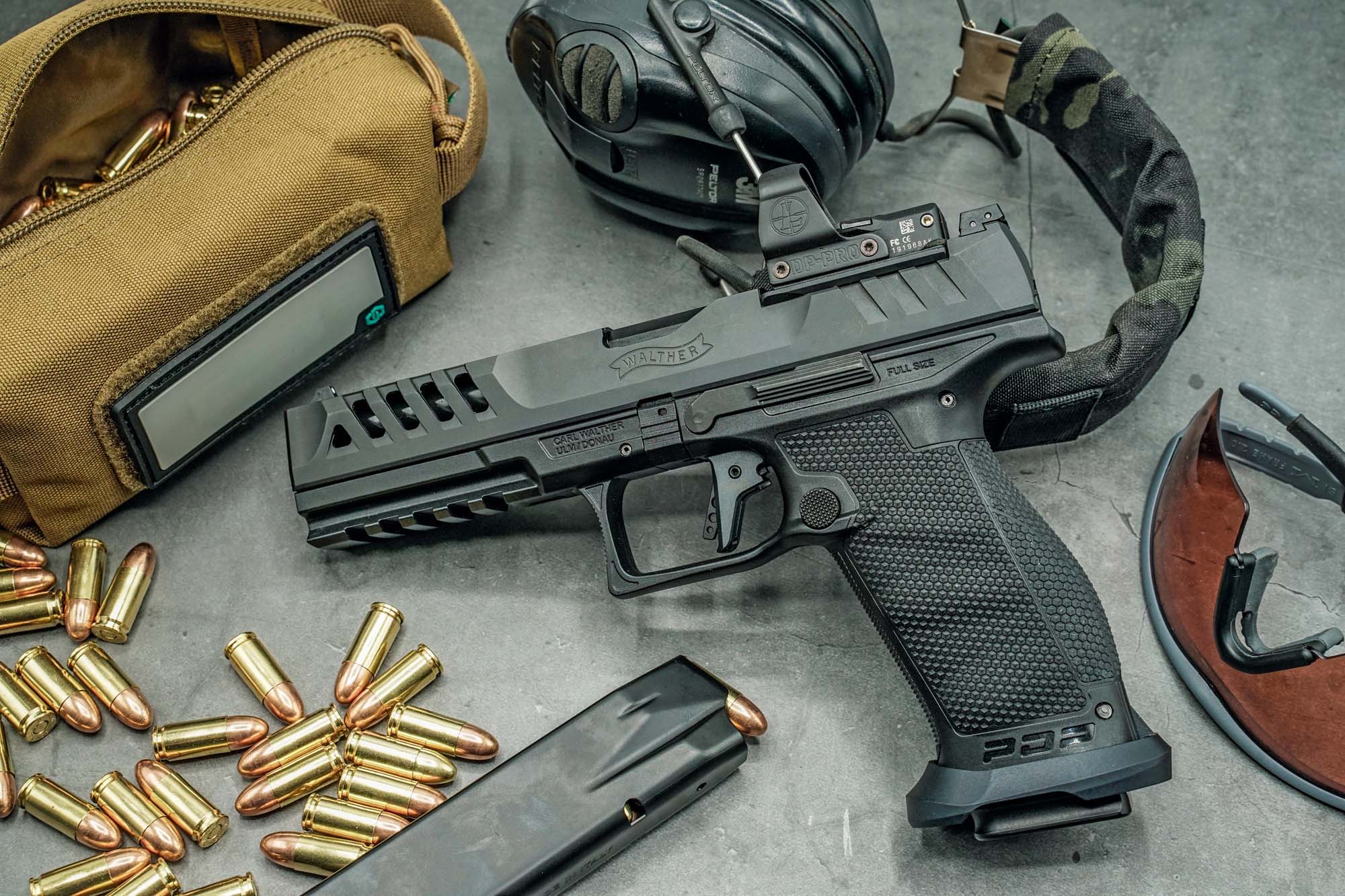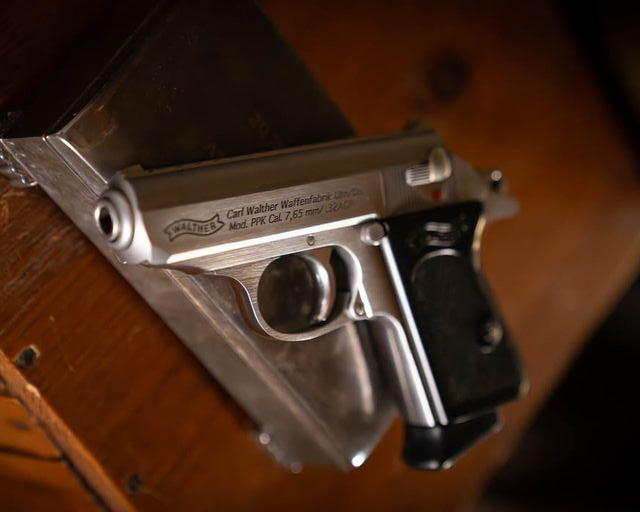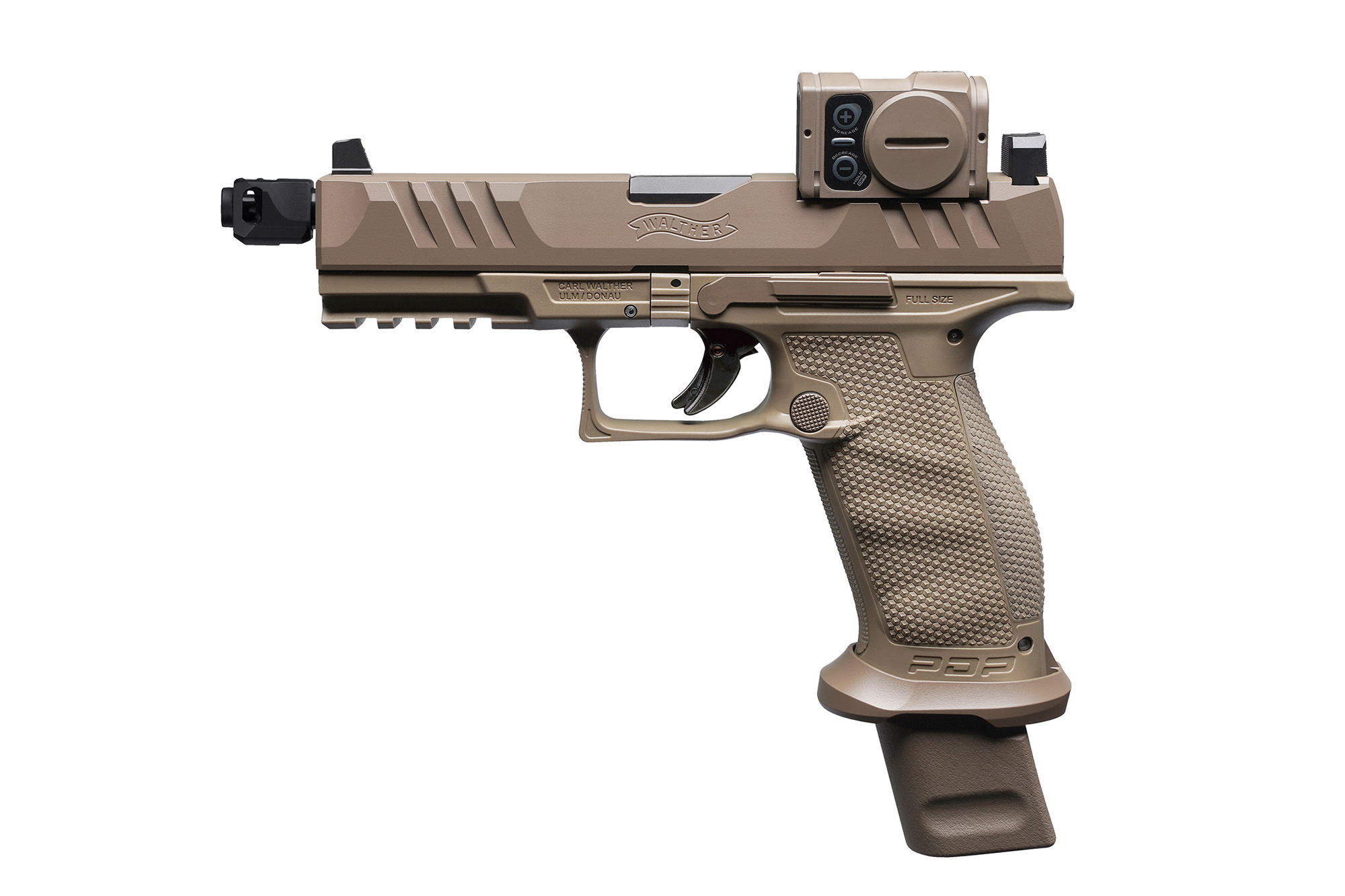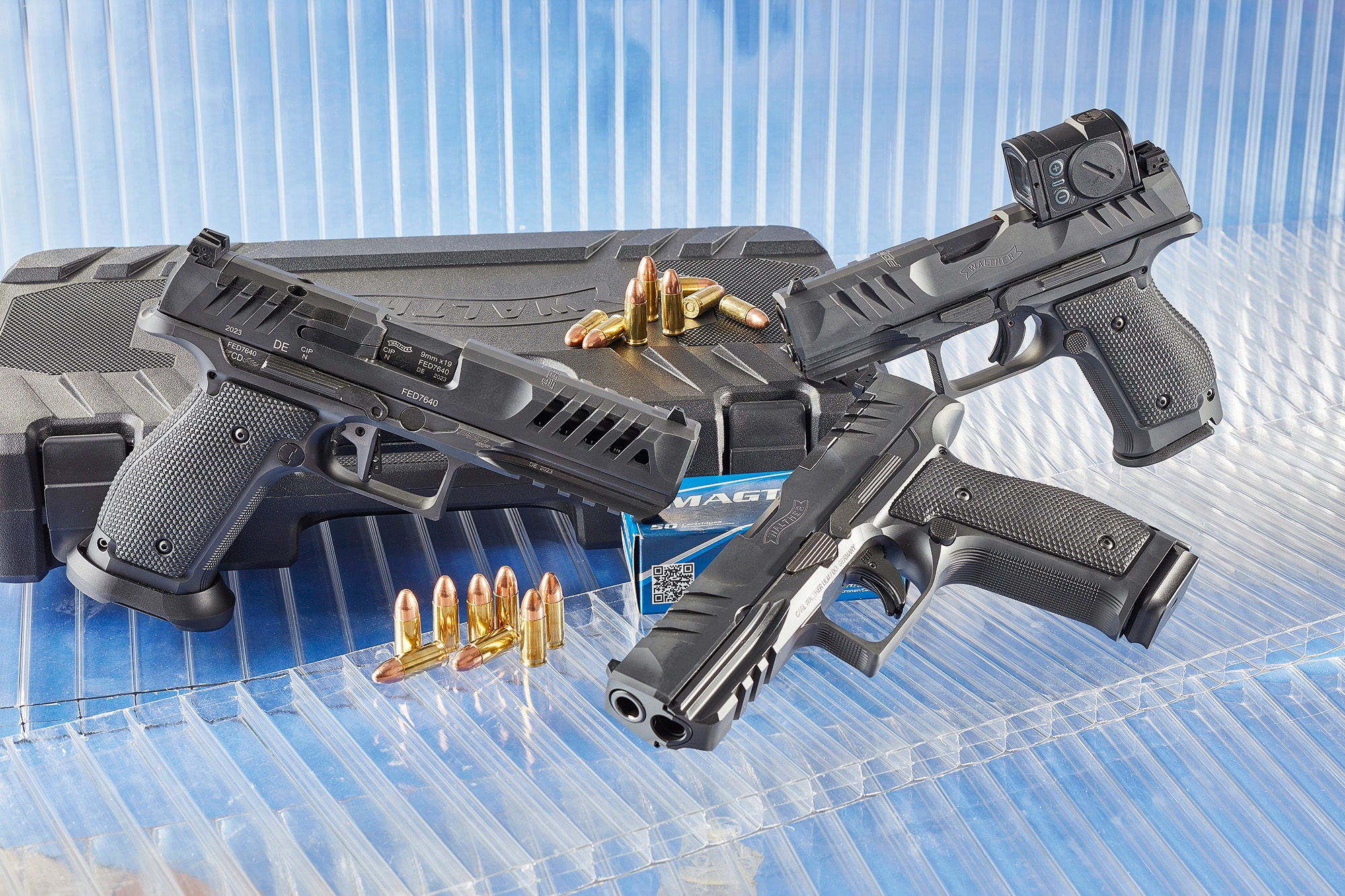If the basic model is currently the most successful smallbore rifle in the world, what could possibly be improved? The designers at the Ulm-based manufacturer Carl Walther thought a lot and presented the Walther KK500 Carbon at the last IWA Outdoor-Classics in Nuremberg. Now, six months later, it is available in individual units, and the video team from all4shooters.com travelled to the German city on the Danube and had Mike Pries explain the concept and function in detail. Pries, himself a former successful rifle shooter, is a member of the Walther sports firearms development team, which is headed by Thomas Bretschneider. In close contact with some of the world's best smallbore shooters, they optimised their successful KK500 model and added the icing on the cake here and there: many tiny changes add up to a much more positive effect.
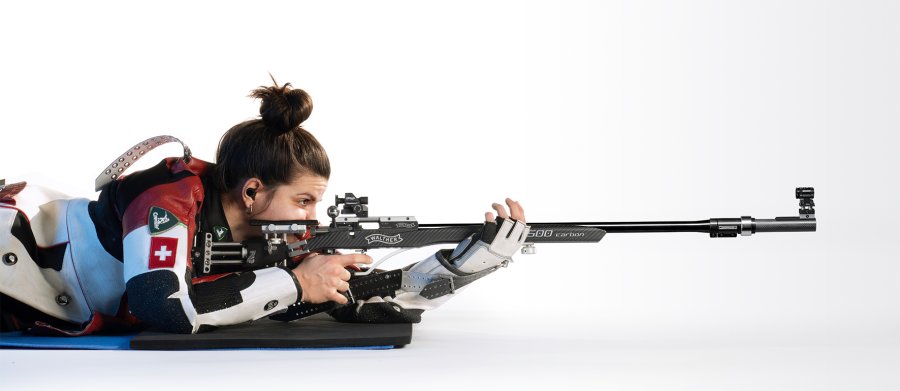
To remind you once again of the basics that made the KK500 the most successful match rifle in the smallbore disciplines in recent years – the Swiss Chiara Leone won Olympic gold in Paris in the three-positions event, and in the men's event all three medals were won by shooters with KK500 rifles, all in the most widely used version with the light aluminum stock (the carbon model was not yet available in the summer, and hardly any top athlete would have changed their sporting equipment so shortly before the Olympics).

Regardless of the stock material (there is also a laminated wood "Anatomic" version), it is a single-shot bolt-action rifle in .22 Long Rifle; the bolt handle can be moved either to the right or left. This Ambi bolt, as Walther christened it, also allows the next cartridge to be fed from either side, depending on the shooter's preference. When standing, for example, it‘s a crucial advantage when the shooting position doesn‘t have to be changed to reload the rifle. For right-handed shooters, it is more practical to reload from the left with the left hand, while the right hand remains on the pistol grip, as their position should always remain the same. In prone and kneeling shooting, on the other hand, it is helpful if the loading port for the cartridge is placed as close to the head as possible so that the feeding arm does not have to make any wide and unnecessary movements, as was previously the case. Walther in Ulm refers to this modified bolt position on the KK500 as the "backtake bolt".
No compromises: the Walther KK500 was designed for optimum match performance in three-positions shooting
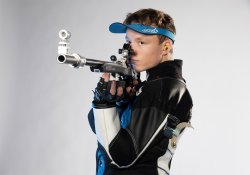
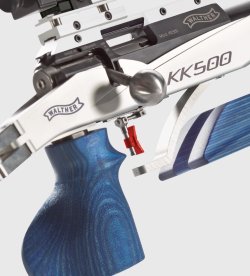
The entire structure of the KK500 was trimmed to the requirements of the three-positions competitions, in which men and women (now with the same program) shoot 20 shots each kneeling, prone and finally standing. The best eight athletes from each qualifying round go through to the decisive final. The conversion times between the individual sub-events are short, which is why the shooters use modules that have already been correctly adjusted in advance – the butt plates, which are adjusted differently for each type of shooting position, are simply removed from the buttstock and replaced with the corresponding counterpart. The fore-end can be removed in a few simple steps and the position of the cheek piece can be changed depending on the eye relief to the rear sight. However, this effort is associated with additional costs, for example for one or two interchangeable butt plates, and is only worthwhile if the KK500 owner actually takes part in international competitions with finals, because only then is time pressing for a quick conversion.
What is different about the carbon stock of the Walther KK500 compared to aluminum or laminated wood?
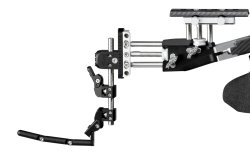
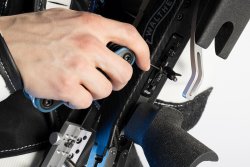
So, why go to all this trouble with the carbon fiber stock, which involves a lot of manual work (and therefore high costs)? In smallbore shooting at top international level, the best results today are so close together and close to the maximum of 600 points that tenths of a ring are scored in the final for more precise differentiation (here are our impressions of the Olympic three-positions event in Paris a few months ago). It is therefore essential to "read" each individual shot correctly during the competition, i.e. to assess based on the recoil behavior and the flip of the front sight tunnel whether all the holding forces are still stabilising the rifle evenly or whether something is not perhaps tight or has shifted slightly. Unavoidable due to the design, a "tuning fork effect" occurs between the barrel vibrating during firing and the stock. This vibration often makes it difficult to read the recoil; some shooters have therefore tried in the past to get this important feedback for possible correction of the point of impact by using other metal stock constructions or even laminated wood, which only yields minimally. The carbon properties now make it possible to build an absolutely vibration-free fore-end despite the thinnest walls. It also fits better in the holding hand (the left one for right-handed shooters) and allows fatigue-free holding. And carbon saves weight (80 per cent compared to steel, for example), which can then be used elsewhere for better balancing.

The use of carbon fiber in sporting guns is by no means new: the Hämmerli Model 280 target pistol already used a carbon fiber frame in 1988. Of course, the comparison is technically flawed because the composition of the material was different back then. The Walther KK500 Carbon is probably more comparable to today's Formula 1 car chassis. And the equally sophisticated aluminum and laminated wood stocks from the same company have already proven their suitability for top performance with countless medals and world records. However, the Walther KK500 Carbon shows what is technologically possible today and there will certainly be appropriate orders. And the other smallbore shooters who don't want to or can't invest a five-figure euro amount have something to dream about that could also put them on the winner's podium...
Walther KK500 Carbon target rifle technical specifications
Basic equipment of the Walther KK500:
- Dimensions: 1,160-1,180/210-230/80 mm
- Weight: 5,750 g
- Barrel length: 690 mm (770 to 940 mm with tube)
- AMBI-Action-System: case ejection and operation on the right or left by moving the bolt handle
- BACKTAKE system positioned far back and deep in the stock – for easy reloading from the shooting position
- Rear stock can be reliably folded via parallelogram joint
- Punched 3D grip in three grip sizes
- Bottom ignition (6 o'clock position) for consistent combustion behaviour
- Weight-optimised firing pin guarantees shortest trigger response time
- New VISIONIC sight with low-profile adjusting screws and integrated secondary sight for rapid target acquisition
- Very short and high-cut buttstock area - also ideal for smaller shooters
- Minimal distance between fore-end and barrel axis – for maximum stability, especially in prone position
- EXPERT hook buttplate – quick replacement by manually loosening a single clamping screw
- Cheek piece fine adjustment (angle – edge – radius) and quick change function
- Electronic match trigger (30 - 130 g) with trigger stop, pressure point or direct trigger are adjustable
- Minimal distance of finger position to barrel axis
- MEC handstop and CENTRA "BLOCK CLUB" sight raiser block (adjustable for elevation and windage)
Additional features of the Walther KK500 Carbon
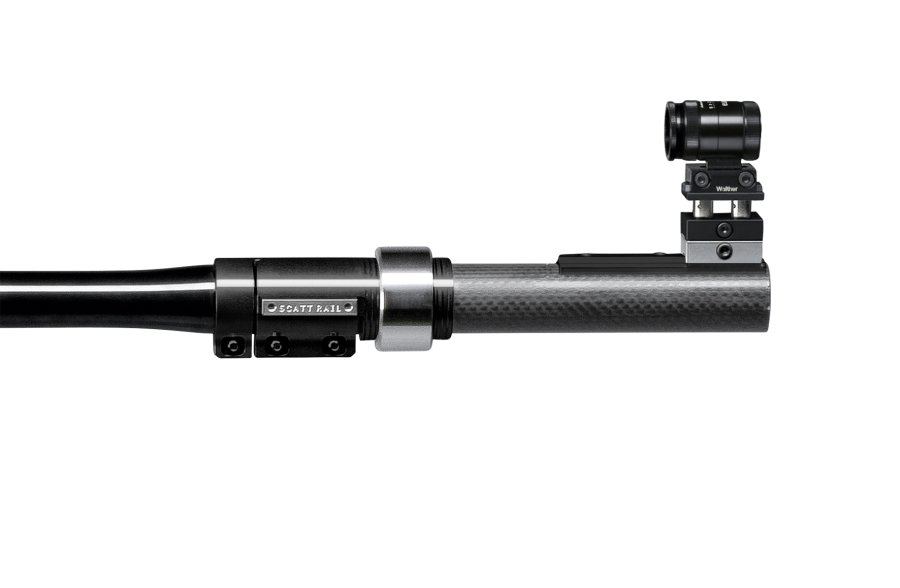
- Newly developed, laterally continously adjustable carbon cheek piece
- Newly developed carbon tube in two lengths, with metal inner tube, Scatt rail, and barrel tuner
- Round, optimized forestock contour for three-position shooting
- Bounce behavior optimized by the use of carbon
- The prices (RRP):
Walther KK500 Carbon with mechanical trigger 9,399 euro
Walther KK500 Carbon with electronic trigger 9,998 euro
The conclusion of all4shooters.com: more than the Walther KK500 Carbon is (currently) technically hardly feasible
The Walther KK500 Carbon smallbore target rifle is the crème de la crème in sports rifle construction, a technological model, so to speak, of what is feasible today, regardless of the cost. All the essential functions (or at least those known by today's standards) have been optimised – but ultimately the decisive factor is still the human who manually pulls the trigger and perhaps wobbles and wavers too much.
Further information:
The 10 current versions of the Walther KK500 on the company website, with ordering option.


